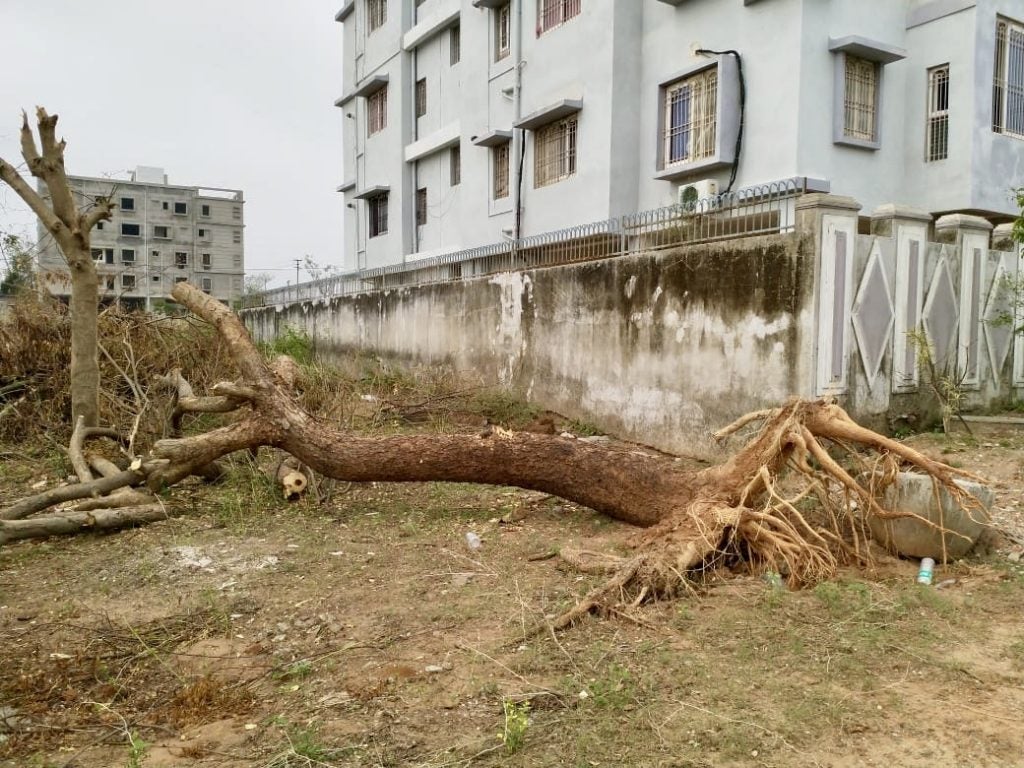My upbringing drew me to work in coastal hazards. Though I work on coastal resilience in Louisiana, I spent much time throughout my childhood and adult life in Odisha, a state with a 300-mile coastline along the Bay of Bengal. Odisha is part of the bay’s infamous cyclonic zone that stretches across the Bangladeshi lowlands, and its coastline has been subjected to devastating storms and floods intensified by the effects of global warming and sea level rise.
Cyclone Fani hit Odisha on May 3 as a Category 4 storm, but its intensity and timing made it distinct. It formed near the equator and had 10 days to gather moisture and gain intensity before making landfall.
My parents live in Bhubaneshwar, the capital of Odisha. I could not reach them after the cyclone made landfall. Two days later, I finally received a call, “Everyone is fine and we have enough food and drinking water to last a week, but we have no power, no running water and no estimate of when those services will be restored.” I am grateful that my parents are safe; however, from my own experience in the U.S., I know that recovery for the region will take time.
Conditions in India are very different from those in the U.S. Even before the storm, there existed significant poverty and population density, and as Puerto Rico demonstrated, natural disasters exacerbate these preexisting inequalities.
Despite these differences, as the rebuilding process begins, there are lessons from Environmental Defense Fund’s work across the globe that can be considered to reduce risk before the next disaster.
Harness natural infrastructure
In the face of extreme weather, natural infrastructure solutions – from restored beaches and wetlands to artificial oyster reefs – help to make ecosystems and communities more resilient.
In Cuba, mangroves have been planted to protect against wave action at a fraction of the cost of concrete seawalls. In Puerto Rico, efforts are underway to replant mangroves to help protect water quality and build resilience in lagoons that are eco-tourism hotspots for the country. While Fani uprooted or damaged a significant number of trees, mangroves remained intact. In India, forest officials and homeowners could plant saplings of trees such as Neem, Peepal, and Banyan, which have large canopies for shade and extensive root networks that can withstand high winds.
Go solar
In the aftermath of Hurricane Maria, Environmental Defense Fund announced an initiative to rebuild Puerto Rico’s electricity using low-carbon microgrids to “keep the lights on when the next storm strikes.” Similar strategies can be employed after Fani, particularly given the immense amount of sunlight the region receives throughout the year.In the face of extreme weather, natural infrastructure solutions – from restored beaches and wetlands to artificial oyster reefs – help to make ecosystems and communities more resilient. Share on X
Build more resilient structures
Creating strong building codes, particularly in flood prone areas, is a powerful means of reducing risk and building resilience. Rebuilding of government-constructed homes should aim to be wind and flood resistant. Incorporating green roofs to harvest rainwater will also make them sustainable year-round.
The ongoing recovery will continue for a long period, but it is vital for the protection of people and property that we begin thinking now about how to make this low-lying region where my family still lives more resilient before the next cyclone. Thankfully, there are many lessons of resilience from around the globe that can provide models of where to begin.










